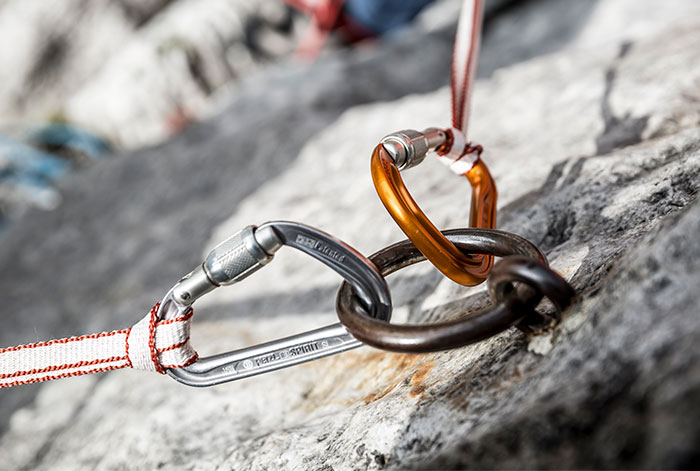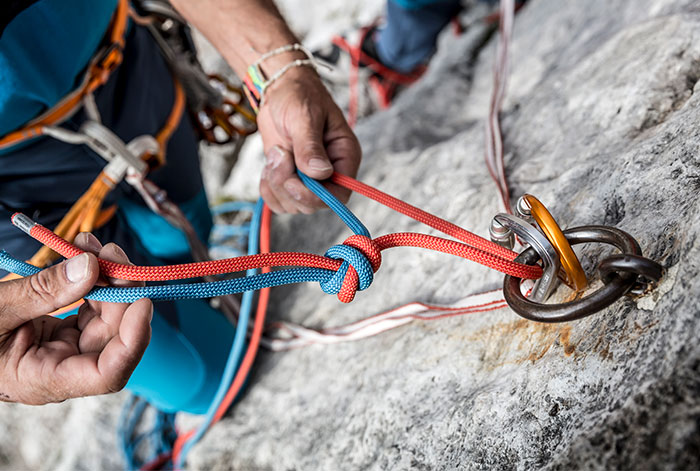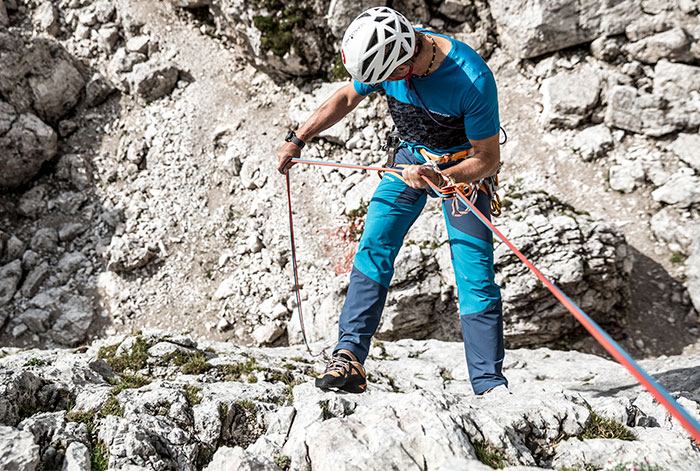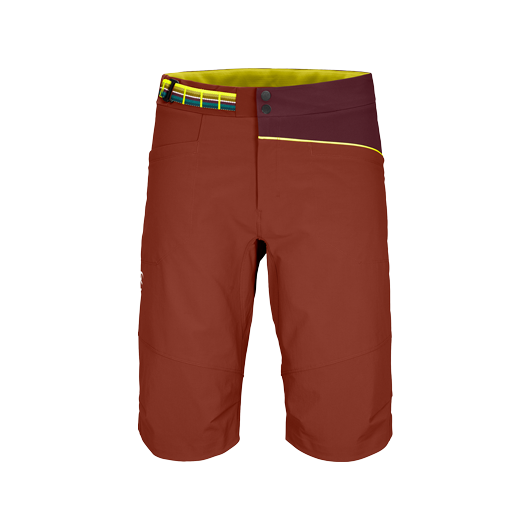To view the content, please accept the necessary cookies.
Video
Rappelling
Subchapter: Descent and rappelling
Descent and rappelling
VARIANT 1: RAPELLING
One third of all fatal climbing accidents occur when abseiling due to carelessness and inattentiveness. It is therefore important to use a short prusik as a self-belay when rappelling. Checking your partner and careful preparation are also key aspects of rappelling.
7. DESCEND WITH LEGS HIP WIDTH APART
You can now start abseiling with your legs hip width apart. In doing so, always keep the ends of the rope in sight to make sure they reach to the next abseiling belay. Always keep both hands on the rope below the belay device. Use one hand to gently push the short prusik downwards.
8. REACHING THE NEXT ABSEIL POINT
At the next abseil point, insert the self-belay and release the rope for your rope partner. Before your partner follows, you can now briefly pull on the rope to ensure that it can be easily removed later.
REMOVING THE ROPE
Before abseiling with two half-ropes, it is important to take note of which end of the rope it can be removed from later: If you pull on the wrong end of the rope, the offset water knot may become jammed in the abseiling ring.
VARIANT 2: LOWERING OFF
It is often advisable for the first person not to abseil but instead to be lowered by their rope partner. This eliminates the need for casting the rope and prevents falling rocks. In addition, the rope is prevented from being confined behind rocks and blocks when casting on flat terrain.
2. LOWERING OFF USING TUBER
To do this, suspend the tuber from three locking carabiners. This prevents annoying kinking when lowering off.
IMPORTANT WHEN LOWERING OFF! Care should be taken to secure the free end of the rope before lowering, so that the lowered person cannot be accidentally lowered over the end of the rope. If you do not know the exact location of the next abseil point and you cannot see it either, you should ensure that the lowered person is in your sight and that you can call to them so that they can give instructions.
VARIANT 3: DESCENDING VIA A STEEP TRACK
A more strenuous option, but often the fastest, is a descent by foot via a path or steep track. It is important to know the route of this track. Under no circumstances should the rope team leave the track as a shortcut. Shortcuts are often no faster, can lead through protected areas or become precarious due to unsound, precipitous terrain. Descents are often marked by cairns.
ATTENTION: It is not uncommon for descents to lead into dangerous, precipitous terrain. It is here in particular that deadly accidents occur. Even when climbing down apparently simple terrain, concentration is of fundamental importance!
RESCUE METHODS
Whether for the approach, on the rock face or during descent: If there is an accident in alpine terrain, climbers need to act quickly, correctly and in a considered manner. In the next chapter we will provide you with important information about the correct behavior in emergency situations!
Go to next chapter
















